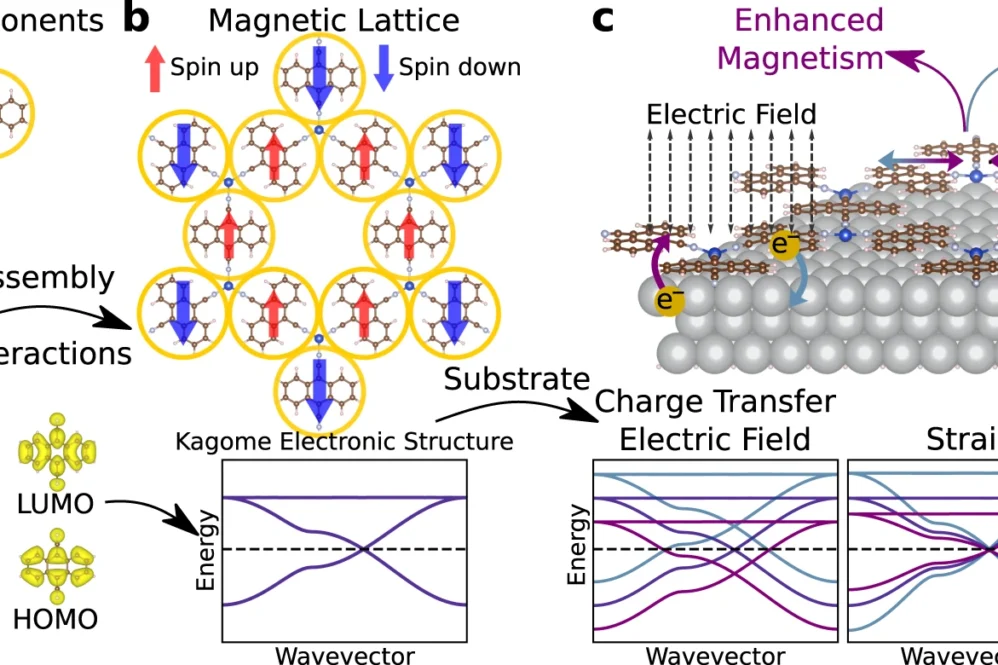This new study illustrates how substrates affect electronic interactions in 2D metal-organic frameworks. With electronic properties tuneable by electrical charge, mechanical strain, and hybridization, such structures can be ‘switched’ off and on, allowing potential applications in future energy-efficient electronics.
Materials with strong electronic interactions can have applications in energy-efficient electronics. When these materials are placed on a substrate, their electronic properties are changed by charge transfer, strain, and hybridisation.
This study shows that electric fields and applied strain could be used to ‘switch’ interacting phases such as magnetism on and off, allowing potential applications in future energy-efficient electronics.
Strong interactions between electrons in materials gives rise to effects such as magnetism and superconductivity. These effects have uses in magnetic memory, spintronics, and quantum computing, making them appealing for emerging technologies.
Last year, another study at Monash discovered strong electronic interactions in a 2D metal-organic framework. The researchers found signatures of magnetism in this material. They showed that this magnetism arose due to strong interactions that were only present when the non-magnetic components were brought together.
This material was grown on a metallic substrate. The substrate was important for the growth and measurement of the material.
Two-dimensional (2D) Metal-Organic Frameworks (MOFs) with a kagome lattice can exhibit strong electron-electron interactions, which can lead to tunable quantum phases including many exotic magnetic phases.
While technological developments of 2D MOFs typically take advantage of substrates for growth, support, and electrical contacts, investigations often ignore substrates and their dramatic influence on electronic properties.
The team showed how substrates alter the correlated magnetic phases in kagome MOFs using systematic density functional theory and mean-field Hubbard calculations. They demonstrated that MOF-substrate coupling, MOF-substrate charge transfer, strain, and external electric fields are key variables, activating and deactivating magnetic phases in these materials. While we consider the example of kagome-arranged 9,10-dicyanoanthracene molecules coordinated with copper atoms, our findings should generalise to any 2D kagome material. This work offers useful predictions for tunable interaction-induced magnetism in surface-supported 2D (metal-)organic materials, opening the door to solid-state electronic and spintronic technologies based on such systems.
Reference: Bernard Field, Agustin Schiffrin, Nikhil V. Medhekar. Correlation-induced magnetism in substrate-supported 2D metal-organic frameworks. npj Computational Materials, 2022; 8 (1) DOI: 10.1038/s41524-022-00918-0



